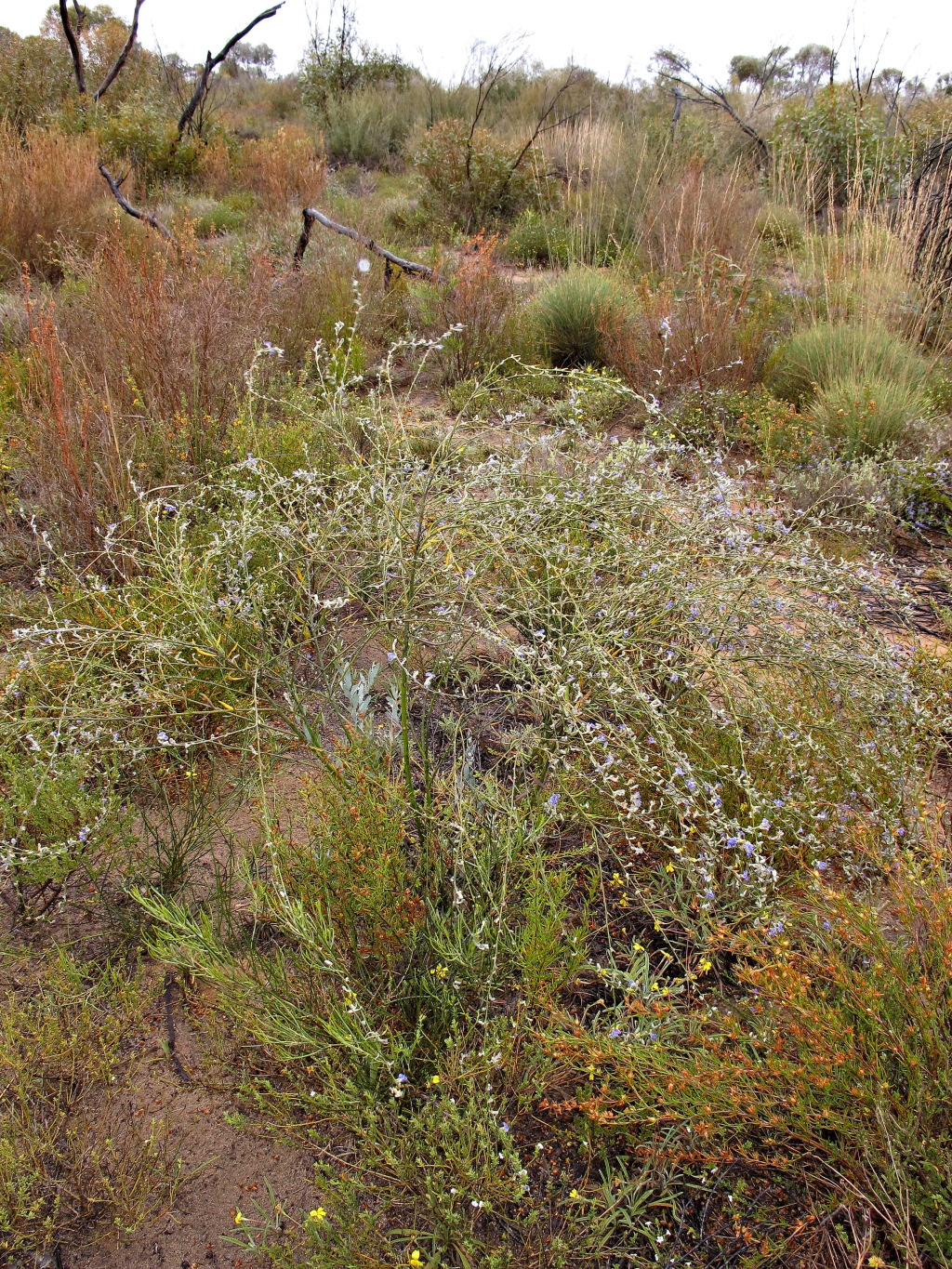Dampiera lanceolata var. lanceolata
Grooved DampieraErect shrub to 1 m high; stems more or less terete, ribbed, white- or grey-tomentose with branched hairs, often glabrescent with age, papillate. Leaves sessile, linear to oblong, 5–55 mm long, 2–26 mm wide, upper surface glabrescent with age, lower surface usually tomentose, margins entire or toothed and thickened or recurved. Inflorescence branches 3–9-flowered, 1–3 together in upper axils, with white and/or grey branched hairs; peduncles 3–60 mm long; pedicels 1–4 mm long; bracteoles narrow-oblong, 1–3 mm long. Sepals 0.3–0.5 mm long, almost obscured by hairs; corolla 8–12 mm long, blue inside, grey-tomentose outside, wings 2–3.5 mm wide. Fruit cylindric, 4–5 mm long, grey-tomentose. Flowers mainly Aug.–Nov.
LoM, MuM, Wim, RobP, Gold, GGr. Also SA, Qld, NSW. Widespread in far north-western Victoria, usually in mallee communities on deep sand.
A resprouter from rootstock following fire and then locally common and conspicuous for a few years, but often rather rare thereafter. Older plants become glabrous or nearly so, dark green and sprawling, quite distinct from white-woolly, more compact, post-fire resprouts.
Jeanes, J.A. (1999). Goodeniaceae. In: Walsh, N.G.; Entwisle, T.J., Flora of Victoria Vol. 4, Cornaceae to Asteraceae, pp. 589–615. Inkata Press, Melbourne.
 Spinning
Spinning


